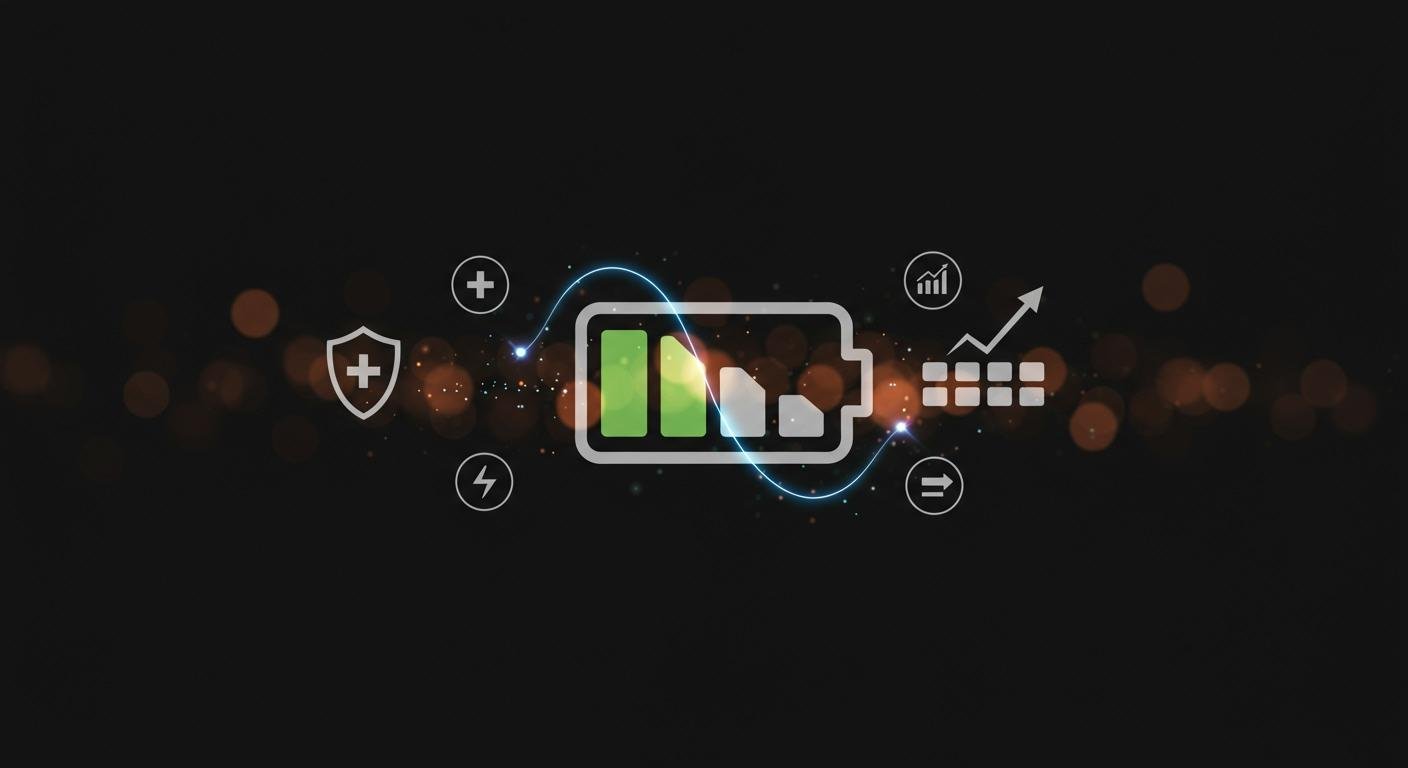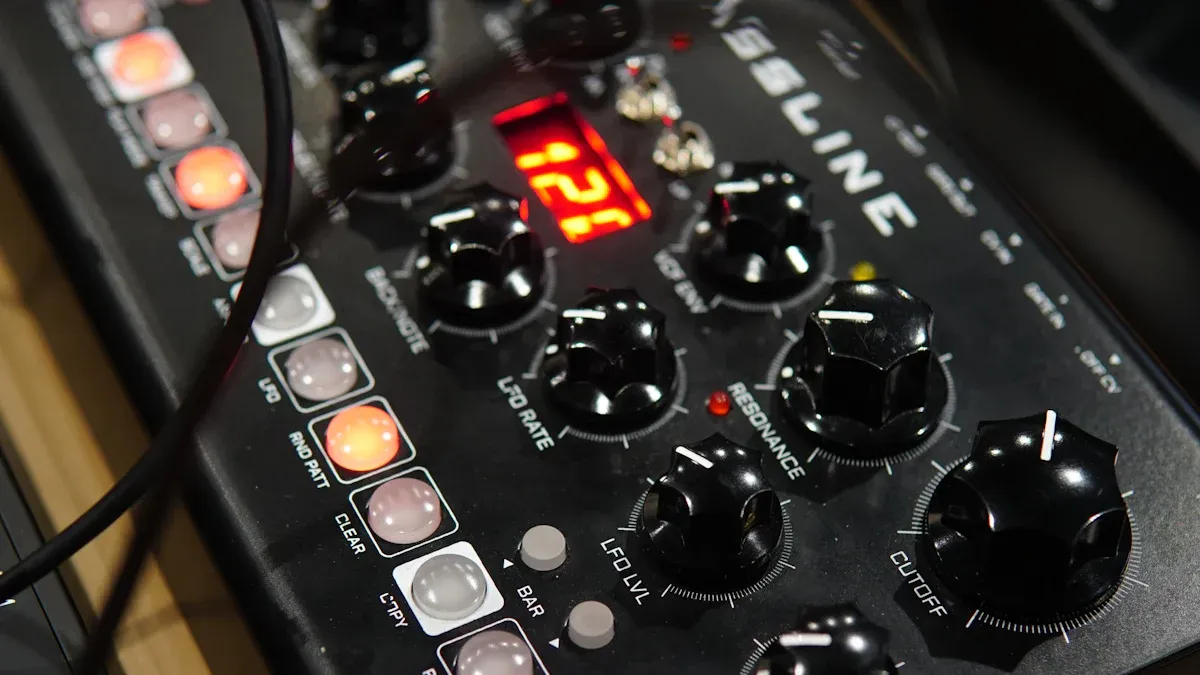
Battery balancers are critical devices. A battery balancer ensures every cell in a battery pack works in harmony. This teamwork is the key to achieving greater battery longevity. A quality battery balancer can extend a battery’s lifespan two to three times.
The balancer achieves this longevity through careful battery balancing. This process is vital for lithium-ion batteries. The battery balancer monitors each lithium battery cell’s voltage. This balancer prevents damage from unequal power distribution inside the battery pack.
The balancer performs battery balancing, making the balancer a crucial tool.
What is a Battery Balancer?

A modern battery pack contains multiple individual cells working together. The health of the entire battery depends on the health of each cell. A problem arises when these cells do not hold the same amount of charge. This condition is called cell imbalance.
The Problem of Cell Imbalance
No two battery cells are perfectly identical. Manufacturing processes, even advanced ones, create tiny differences. These variations affect a cell’s initial capacity and internal resistance. Some experts call these differences ‘congenital birth’ inconsistencies. This initial imbalance grows worse over time.
Several factors contribute to this growing problem:
- Manufacturing Variations: Slight differences in materials or assembly cause cells to perform differently from the start.
- Temperature Gradients: Uneven heat distribution within a battery pack is a major issue. A temperature difference of just 5°C can lead to capacity loss. Cells in hotter areas degrade faster.
- Aging: Each battery cell ages at its own rate. This causes their performance characteristics to diverge further over the years.
- Charge Cycles: Incorrect charging or discharging habits can stress certain cells more than others, increasing the imbalance.
Imagine a team of runners in a relay race. If one runner gets tired much faster than the others, the entire team’s performance suffers. The team can only run as far as its weakest member can go. A battery pack works the same way. The weakest cell limits the entire battery’s performance.
The battery management system (BMS) protects the pack. It stops charging when the first cell reaches full capacity. It stops discharging when the first cell becomes empty. This action traps usable energy in the stronger cells. For example, if one cell is at 90% charge while others are full, the system can only use 90% of its total potential capacity. This reduces the battery’s overall performance and shortens its lifespan. A good battery balancer prevents this. The battery balancer is a key tool. A battery balancer keeps every cell in check. The battery balancer works hard. This balancer is essential.
The Balancer as the Solution
A battery balancer is an electronic device. It monitors the voltage of every cell in a battery pack. The primary job of a battery balancer is to correct any imbalance. The balancer ensures all cells maintain a nearly identical state of charge. This process is called battery balancing. A battery balancer performs this battery balancing constantly. The battery balancer is the solution to the problem.
This balancer acts like a coach for the team of cells. It identifies the stronger cells with more charge. It then helps transfer that excess energy to the weaker cells. This action keeps the entire team working in harmony. The battery balancer makes sure no single cell is overcharged or over-drained. The process of battery balancing is vital.
The table below shows how a balancer helps.
| Without a Balancer (Problem) | With a Battery Balancer (Solution) |
|---|---|
| The weakest cell limits the whole battery. | The balancer ensures all cells work together. |
| Usable battery capacity decreases over time. | The balancer helps maintain maximum capacity. |
| The battery degrades faster. | The battery lifespan is significantly extended. |
| The risk of cell damage is high. | The balancer protects cells from stress. |
In short, battery balancers are the guardians of your battery pack. A balancer is not just an accessory; it is a fundamental component for longevity and performance. The balancer makes the battery reliable. A quality battery balancer is a smart investment. This balancer protects your battery.
The Process of Battery Balancing
Battery balancing is the core function of a battery balancer. This process corrects voltage differences between cells. There are two main methods for battery balancing: passive and active. Each method uses a different strategy to ensure the health of the battery.
Passive Balancing to Prevent Overcharging
Passive balancing is the simpler and more common method of battery balancing. This type of battery balancer prevents the overcharging of individual cells. It works by removing excess energy from the strongest cells.
The process is straightforward and relies on a simple principle.
- The battery management system (BMS) performs real-time monitoring of each cell’s voltage during charging.
- When one cell’s voltage reaches a preset threshold, often above 3.4V, the balancer identifies it as fully charged.
- The battery balancer then connects a small resistor across that specific cell.
- This resistor creates a load, bleeding off the extra energy as a small amount of heat. This action stops the cell’s voltage from rising further.
This method allows the other cells in the battery to continue charging and catch up. The balancer effectively puts the brakes on the strongest cells. This ensures the entire battery pack reaches a uniform state of charge. A passive battery balancer is a cost-effective tool for smaller lithium-ion batteries.
However, passive balancing has significant limitations. The primary drawback is its inefficiency. The balancer wastes valuable energy by converting it into heat. This process can also be very slow, with balancing currents often between 50-200mA. This makes it unsuitable for correcting large imbalances or for high-power lithium battery systems.
Active Balancing vs. The Lithium Battery Equalizer
Active balancing offers a more advanced and efficient solution. A device that performs this function is called a lithium battery equalizer. Instead of wasting energy, a lithium battery equalizer actively moves it. The equalizer transfers charge from cells with higher voltage to cells with lower voltage. This makes the lithium battery equalizer a far more effective balancer.
An active battery balancer, or lithium battery equalizer, uses sophisticated electronics for this task.
- The system uses real-time monitoring to identify the highest and lowest voltage cells.
- It then uses components like capacitors or inductors to store energy from the strongest cell.
- Finally, the lithium battery equalizer transfers that stored energy to the weakest cell.
This energy recycling makes the active balancer highly efficient, often over 90%. The lithium battery equalizer does not generate significant heat. This makes the equalizer ideal for large battery packs, such as those in electric vehicles or off-grid homes. A good equalizer performs real-time monitoring and adjusts the battery constantly. The lithium battery equalizer ensures the battery operates at its full potential. This equalizer is a key component for high-performance lithium-ion batteries. The lithium battery equalizer provides superior battery balancing.
The table below compares the two types of battery balancers. A lithium battery equalizer is a type of active balancer. This equalizer provides superior performance for any large lithium battery. The balancer choice depends on the application.
| Fonctionnalité | Passive Balancer | Active Balancer (Lithium Battery Equalizer) |
|---|---|---|
| Method | Wastes energy as heat | Transfers energy between cells |
| Efficiency | Low (energy is lost) | High (typically >90%) |
| Speed | Slow (milliampere range) | Fast (ampere range) |
| Heat | Generates heat | Generates very little heat |
| Meilleur pour | Small, low-cost battery packs | Large, high-performance battery packs |
Benefits of Using Battery Balancers
Using battery balancers provides significant advantages. A quality battery balancer protects the battery investment. It enhances longevity, safety, and performance. These benefits make the balancer an essential component for modern lithium battery systems.
Longer Battery Lifespan
A battery balancer is key to achieving greater battery longevity. The balancer works to prevent conditions that shorten a battery’s life. Research shows that variations in cell temperature and resistance can reduce battery lifespan by 10–40%. A battery balancer mitigates this issue.
The balancer extends longevity by keeping each cell in a stable state. A battery is healthiest when its charge is in the middle range. The battery balancer prevents individual cells from overcharging or deep discharging. This protection reduces chemical stress and preserves the battery’s health.
This process of battery balancing ensures the entire battery pack ages more evenly. The balancer helps the battery reach its maximum potential lifespan.
Improved Safety and Performance
A battery balancer greatly improves the performance and safety of a battery. An unbalanced battery creates serious risks. Certain cells can become over-stressed, leading to overheating and potential thermal runaway. A balancer prevents this by ensuring no single cell takes on too much load. The battery management system uses the balancer to keep all cells at an equal voltage.
This constant battery balancing leads to better battery performance.
- The battery delivers more consistent power output.
- It maintains its maximum usable capacity.
- The overall battery performance remains reliable over time.
Many safety certifications, like CE and ETL, require strict monitoring of battery cells. A good battery balancer helps meet these standards. The balancer is a guardian for the battery.
Significant Cost Savings
Investing in a battery balancer leads to substantial long-term savings. The cost of a balancer is very small compared to replacing an entire battery pack. For example, a full battery replacement for an electric vehicle can cost thousands of dollars. A battery balancer costs only a fraction of that price.
By extending the life of the battery, the balancer delays the need for a costly replacement. This active protection reduces maintenance needs and lowers the total cost of ownership. The balancer is a smart financial decision. It protects the battery and saves money over the long run.
A battery balancer is an essential component for modern lithium-ion batteries. This balancer is not an optional accessory. The battery balancer maintains cell equilibrium, which is vital for battery longevity. A quality battery balancer protects the lithium battery from damage. This balancer ensures peak battery performance. The process of battery balancing improves overall performance and safety. People should view the balancer as a crucial part of lithium battery maintenance. Good maintenance with a battery balancer ensures the best battery performance for all lithium-ion batteries. The balancer is a key tool.
FAQ
Do all batteries need a balancer?
No, not all batteries require a balancer. Single-cell batteries do not need one. A balancer is essential for battery packs with multiple cells connected in series. This is especially true for lithium-ion battery chemistries, which are sensitive to voltage differences.
Can a balancer fix a dead cell?
A balancer cannot revive a dead or faulty cell. Its job is to maintain balance among healthy cells. If a cell is permanently damaged, the entire battery pack may need replacement. The balancer prevents this damage from happening in the first place.
Is a BMS the same as a balancer?
A Battery Management System (BMS) is not the same as a balancer. The BMS is the battery’s main computer. It monitors temperature, current, and voltage. Balancing is just one of the many functions that a modern BMS performs to protect the battery.
How often does a balancer work?
A balancer works whenever it detects a voltage imbalance. Passive balancers usually work at the end of the charge cycle. An active balancer, or equalizer, can work continuously during charging, discharging, and even when the battery is idle to maintain perfect balance.

